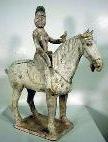
- LOTE13 Home
- Getting Started
- Rules Addenda
- Campaign Maps
- The Newsfax
- Starting Positions
- Files to Download
- A Bibliography
- Get the LOTE Rulebook
- Main LOTE Page

A Twilight of Empires
Lords of the Earth, Campaign 13

Trade Routes
In most nations, roads on the Roman model were non-existent. Movement was instead directed along trade routes, maintained locally with caravanserai, inns, and whatnot. This at least is my reading of historical geography.
In this spirit, the Silk Route rules (4.3.2) are extended in this campaign to all trade routes, noted on the maps in nearly all parts of Eurasia and Africa. Consider these as the first part of a transport network, to be succeeded by Postal and then Royal Roads, though very different from them.
Players may not build Trade Routes, as by their nature they are outside the scope of direct governmental action. They appear and disappear when conditions change, i.e. when the GM judges such is necessary.
The income benefits from a Silk Route to regions and provinces accrue. Further, leaders and armies (and CCR) travelling along a Trade Route deduct 1 (one) AP from whatever movement penalty is imposed by terrain. Thus Trade Routes are also likely invasion routes.
Trade Route benefits are not cumulative with other routes or roads - Postal Roads and such are considered to be improved or altered from the underlying ancient Trade Routes.
Example
| King Aethelwoof leads his Frisian horse archers, along with subject legionaries and dihqans, from Sinkiang into Kuldja after a successful campaign against the Chinese, thus completing his conquest of the known world. This takes his 2000-unit army across a Type-2 mountain range (costs 2 AP) and into a wilderness region (costs 1 AP). From each of these 1 (one) AP is deducted, so that the net penalty is only 2 AP plus 1 AP less 1 AP twice, or only 1 AP slower. His men cheer the wise leadership of Aethelwoof, World Emperor. |
